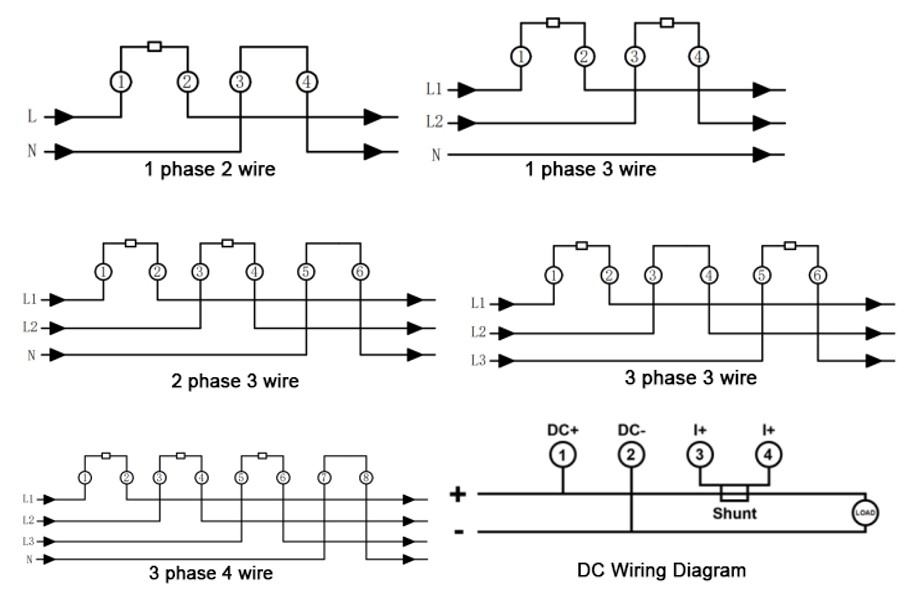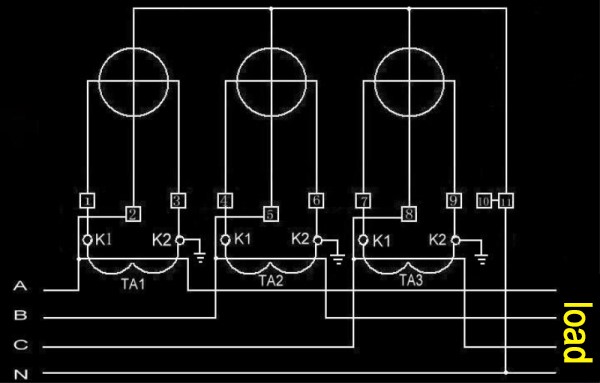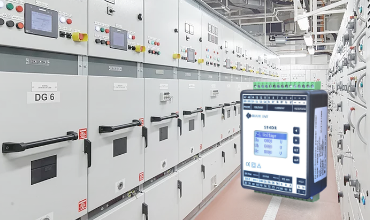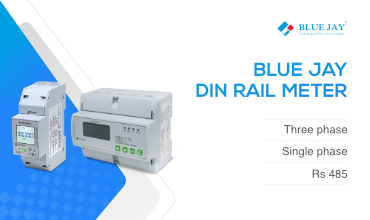
5 Types of Electric Energy Meters Based on Power Supply Methods
Electric energy meters are instruments used to measure electric

How to connect three phase meter? Three phase meters have a direct connection, transformer connection, current, voltage transformer connection, and other wiring methods.

1) 1 and 2 are called U, which are the live wires of the three-phase four-wire ammeter, connected to the incoming terminal of phase A, and connected to the outgoing terminal of phase A;
2) 4 and 5 are called V, which are the live wires of the three-phase four-wire ammeter, connected to the B-phase incoming terminal, and 6 connected to the B-phase outgoing terminal;
3) 7 and 8 are called W, which are the live wires of the three-phase four-wire ammeter, connected to the C-phase incoming terminal, and 9 connected to the C-phase outgoing terminal;
4) A, B, and C three-phase outlets are connected to the load;
5) 10 is connected to the neutral line, and connected to the following wiring.

1) 1, 4, and 7 must be connected to the S1 terminal on the secondary side of the current transformer, which is the incoming terminal of the current;
2) 3, 6, and 9 must be connected to the S2 terminal on the secondary side of the current transformer, which is the outlet terminal of the current;
3) 2, 5, and 8 are respectively connected to A, B, and C three-phase power supplies;
4) 10 is connected to the neutral line. Generally, for the sake of safety, the S2 terminal of the current transformer must be connected and then grounded.
Note: The current measurement sampling of each current transformer must be kept in phase with its voltage sampling, that is, 1, 2, 3 are a group; 4, 5, 6 are a group; 7, 8, 9 are a group.>
When a three-phase meter measures high current and high voltage, because the voltage and current are very large, they cannot be directly connected. Voltage and current transformers should be used to convert the voltage and current and convert the high voltage and high current into small voltage and small current, that is, the voltage and current that the energy meter can withstand, and then measure.
1) 1, 4, and 7 should be connected to the S1 terminal on the secondary side of the current transformer, which is the current input terminal;
2) 3, 6, and 9 should be connected to the S2 terminal on the secondary side of the current transformer, which is the current output terminal;
3) 2, 5, and 8 are connected to the voltage transformer respectively;
4) 10 should be connected to the neutral line and grounded together with the voltage transformer;
In actual work, the 3 phase electric meter customers that power supply employees come into contact with are often low-voltage power supplies, and most of them use mechanical three-phase four-wire watt-hour meters.
After installing the three phase electric energy meter, it is also possible to check whether the electric energy meter is running forward and whether the speed is normal, but it is often neglected to test whether the phase sequence of the three-phase voltage is correct.
If a reactive energy meter is installed, you can judge whether the phase sequence is correct or not by observing whether the reactive energy meter is rotating forward or not. However, only the active energy meter is installed, and the correct phase sequence cannot be judged by the positive rotation of the 3 phase energy meter.
Because when the reverse phase sequence is connected, the three-phase active energy meter can still rotate forward. Therefore, in order to avoid creep and additional errors caused by the reverse phase sequence to the three-phase electric energy meter, after installing the three-phase electric energy meter, it is necessary to conduct a power-on inspection test and use the phase sequence meter to retest whether the three-phase voltage phase sequence is correct.
If it is a reverse phase sequence, the incoming and outgoing lines of the two phases can be exchanged arbitrarily to change to a positive phase sequence. In the phase sequence of the electric energy meter with transformer, it should be noted that the voltage and current of the same phase must be exchanged at the same time to be correct.

Electric energy meters are instruments used to measure electric

What is multifunction meter? This article will introduce it

With the advancement of science and technology, the din




